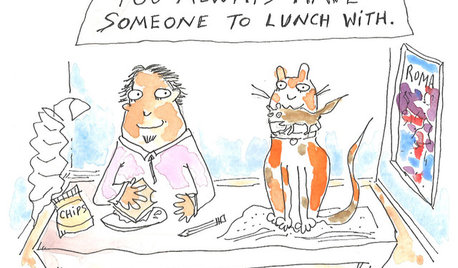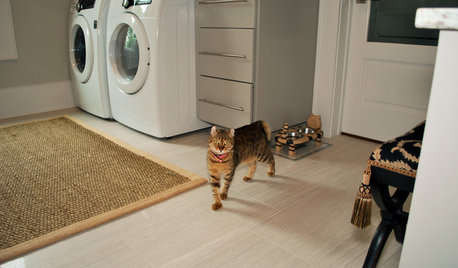advise needed please- rescue cat hates my fur family
homebodymom
13 years ago
Related Stories

PETSHouzz TV: Watch These Rescued Cats Make a House Their Playland
Spirals, catwalks, tunnels and platforms create a superhighway inside this home in Southern California
Full Story
FUN HOUZZ6 Reasons Every House Needs a Cat
Everyone should have a feline fixture as part of their home decor. Here's why
Full Story
HEALTHY HOMEWhat You Need to Know About Dust and How to Fight It
Breathe easier with these 10 tips for busting mites, dander and other microscopic undesirables
Full Story
HOUZZ TOURSHouzz Tour: For the Love of a Cat in Philadelphia
Pet-friendly features integrated into a mod, eclectic and colorful home mean everyone in the family is happy
Full Story
HOME OFFICESQuiet, Please! How to Cut Noise Pollution at Home
Leaf blowers, trucks or noisy neighbors driving you berserk? These sound-reduction strategies can help you hush things up
Full Story
HOUSEPLANTSMother-in-Law's Tongue: Surprisingly Easy to Please
This low-maintenance, high-impact houseplant fits in with any design and can clear the air, too
Full Story
PETSHouzz Pets Survey: Who Rules the House — Dogs or Cats?
New data shows that pets make people happy, and pet owners love spending big to return the favor
Full Story
PETSHouzz Call: Send in the Design Cats
Post your best photo of your cat at home, in the garden or with you in your studio. It could be published in a featured ideabook
Full Story
PETSSo You Want to Get a Cat
If you're a cat lover, the joys outweigh any other issue. If you haven't lived with one yet, here are a few things to know
Full Story
THE HARDWORKING HOMEA Laundry Makes Room for a Diva Cat
A South Carolina laundry room was designed to be sophisticated and functional, but when a kitten arrived, whimsy emerged
Full StoryMore Discussions









sylviatexas1
newhomeseeker
Related Professionals
Nanticoke Architects & Building Designers · Birmingham Interior Designers & Decorators · Gages Lake Furniture & Accessories · Westport Furniture & Accessories · Adelphi Flooring Contractors · Bethpage Flooring Contractors · Decatur Flooring Contractors · Des Plaines Flooring Contractors · Framingham Flooring Contractors · Homestead Flooring Contractors · New Britain Flooring Contractors · Oakdale Flooring Contractors · Parma Heights Flooring Contractors · Pepper Pike Flooring Contractors · Randolph Flooring Contractorsjackieblue
homebodymomOriginal Author
sylviatexas1
mazer415
laurief_gw
homebodymomOriginal Author
cheryl_p
carmen_grower_2007